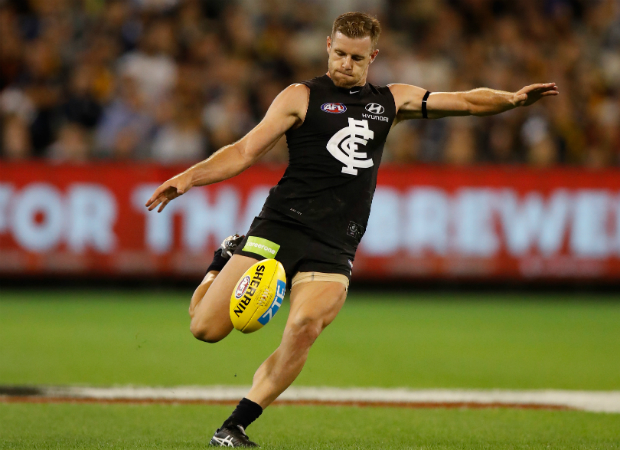To lovers of the game, the myriad of rules which make up the game of Australian Rules Football all make plenty of sense — at least for the most part. But while we’ve generally got our heads around the push in the back, holding the ball, and deliberate out of bounds (sometimes), there are a few more quirky AFL rules that you may not have known about.

5.5.3 — Players exceeding permitted number
This extremely rare rule comes into effect when one team has more than the permitted 18 players on the field. It is actioned when either the captain, vice-captain or runner of a team requests a head count from the umpire, and if the accused side is found guilty, they receive a pretty hefty penalty. A free kick and 50 metre penalty will be given to the captain of the other team, and more significantly, all points scored that quarter by the offending team will be removed.
It might seem like a big price to pay, particularly if it happens late in a high-scoring quarter, but spare a thought for any offending team in the past — until the last couple of years, teams with too many players on the field would lose all points they had scored in the entire match, not just the quarter.
17.11 — Shaking goal post or behind post
This one is pretty self-explanatory, and basically results in a certain goal being handed to the opposition. On the rare occasions that it does happen, generally a player is having a shot for goal — if they kick the goal despite the post being shaken all continues as normal, but if they miss they get a shot from the centre of the goal square.
You’d be right to think it would be very unusual for a player to engage in this behaviour, but it’s actually happened a couple of times in recent memory. Dane Rampe, a defender for surprise finals contender Sydney, hit the headlines back in 2019 when he climbed the post as Essendon player David Myers took a shot after the siren to win the game – the shot missed and a free wasn’t paid against Rampe, but he did receive a $1,000 fine after match officials watched the replay.
But he wasn’t the first — that was actually the seventh occasion in AFL history in which a player has been punished for this transgression. The most recent prior to Rampe was Dustin Fletcher back in 2001, while the first was South Melbourne’s Arthur Hando way back in 1924.
17.2 — Starting positions
This is a new rule of the AFL that was brought in as an attempt to reduce the congestion which has been largely responsible for the continual decrease in scoring in recent years. According to the rulebook, these are aimed at ‘retaining the traditional positions of Australian football’, and require six players from both teams to begin on their forward side of the centre square, and six on the defensive side of it.
The rules stipulate that when teams fail to do this, a free kick will be awarded to the opposition in the centre square and an automatic 50-metre penalty applied — so basically they get a shot for goal from about 30 metres out. However, umpires appear to have been directed to provide a little bit of leniency, and give a first warning to transgressing teams prior to paying a free kick.
To many — mostly those who don’t follow the sport — even the most basic rules of the AFL are strange and confusing. Those who love the game are a little more on top of it all, but even the most ardent AFL fans would likely be surprised to hear about a couple of the above.

Leave a Reply